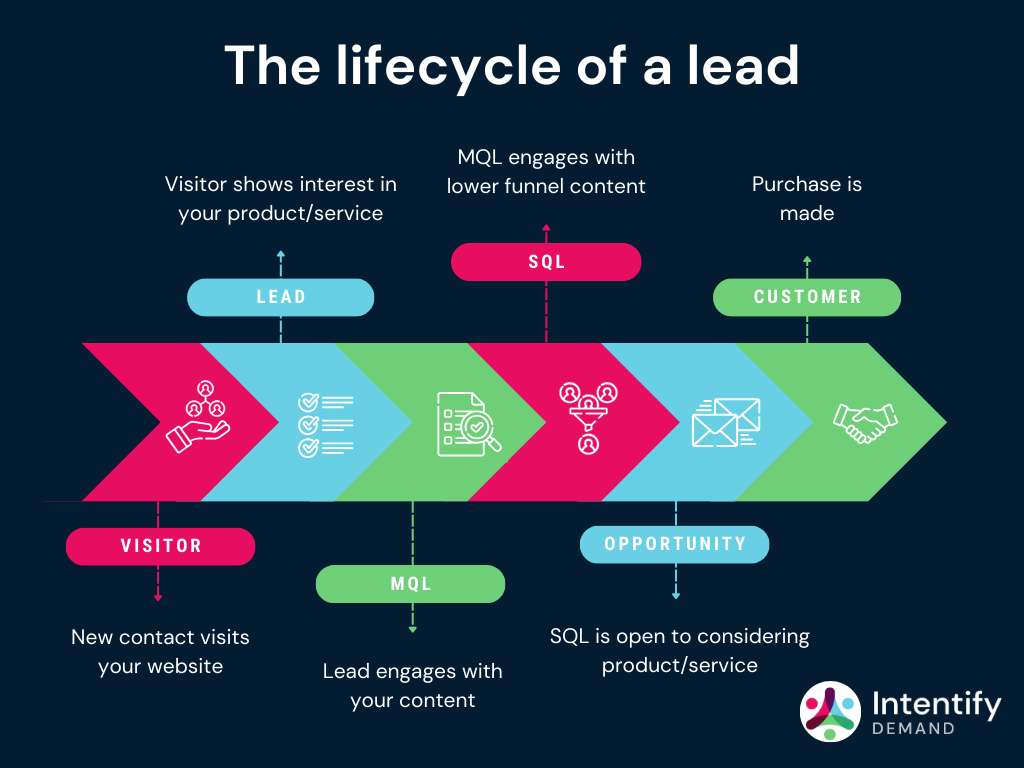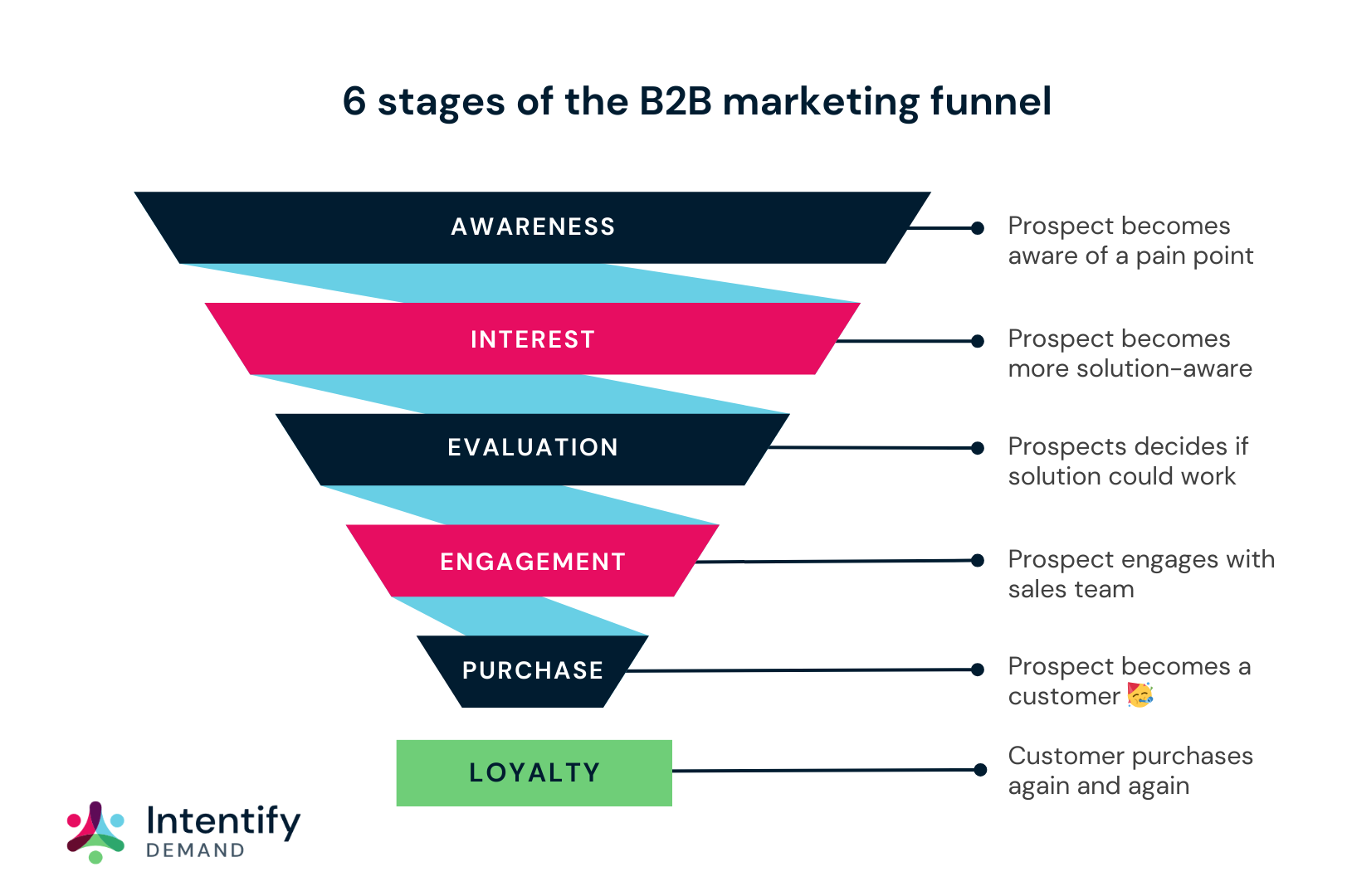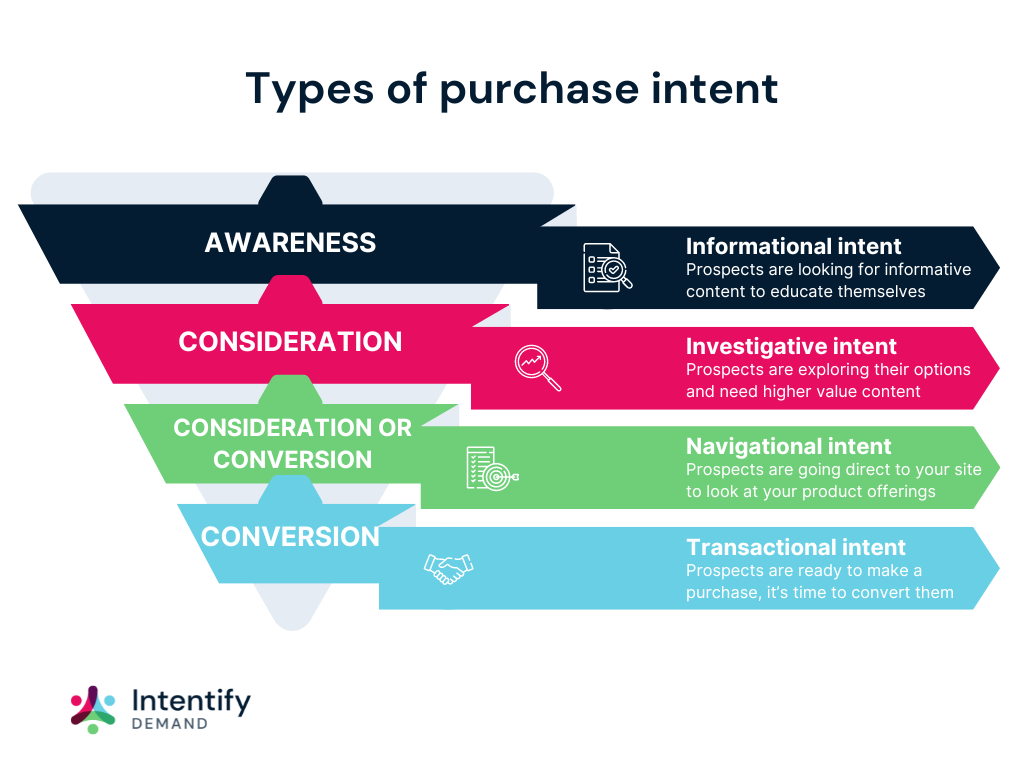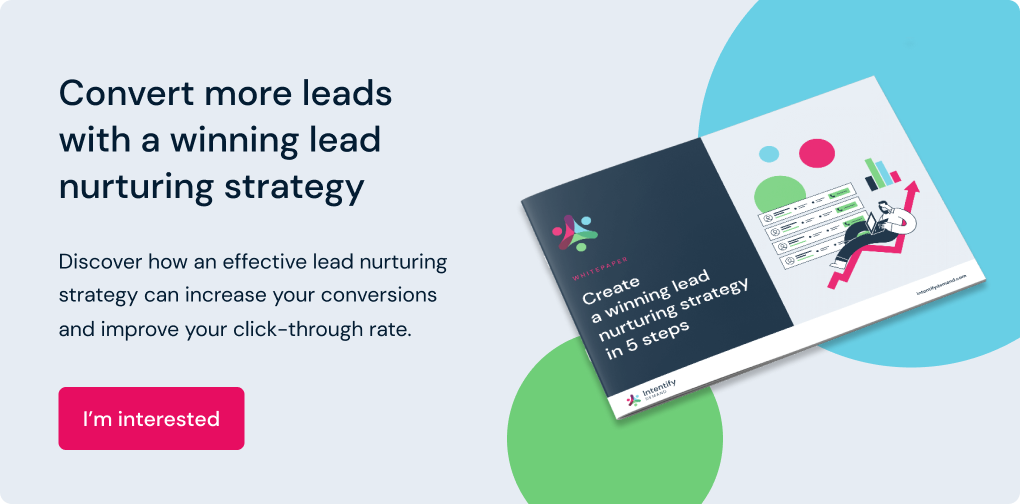Read time: 9 minutes
In sales, timing is everything. Salesforce's State of Sales says salespeople only spend 28% of their time actually selling. This means when it comes to providing SQLs, marketers need to make sure the lead is ready for a conversation with the sales team. Too early and not only is it a wasted opportunity, but it's also wasted time that could have been spent converting a different prospect. Too late, and the prospect might have already chosen to go with a competitor.
Timing is the difference between converting a lead and losing a sale. But how do you strike the balance between reaching out too early, or leaving it too late?
Understanding where a lead sits in the buyer’s journey will be key. Then you can target your messaging with the information they want to know, when they want to know it.
What is a marketing qualified lead (MQL)?
A marketing qualified lead (MQL) is a potential customer who has shown an interest in your brand. For example, they might have downloaded some of your marketing resources or repeatedly visited your website.
Determining whether a potential lead is an MQL is done by tracking an individual's actions, such as which calls-to-action (CTAs) they clicked on, which pages they visited, what offers they downloaded, as well as how they interacted with you on other channels, such as via social media.
What is a sales qualified lead (SQL)?
A sales qualified lead (SQL), on the other hand, is a prospective customer who is ready to engage with the sales team. This readiness is usually determined by their level of interest and engagement with the product(s) or service(s) on offer. They've expressed enough of an interest to move forward in the sales process, indicating a higher likelihood of conversion.
Marketing qualified leads vs sales qualified leads
MQLs and SQLs are very different and should be treated as such. Don't make the mistake of lumping them together as this will negatively impact your conversion rate and reduce the likelihood of your sales team being able to close deals.

While MQLs are still in the nurturing stage and require further engagement from the marketing team, SQLs have reached the point where they require a more personal touch from the sales team. By clearly defining what these two stages look like, and outlining clear qualification criteria, marketers can better allocate their resources and ensure that each lead receives the appropriate attention based on their readiness to convert into a paying customer.
The question is, how do you convert an MQL to an SQL?
How to move an MQL to an SQL
Not every MQL will become an SQL.
If you move leads to sales too early, they may not be ready to convert yet. If you move them along too late, you might lose them to your competitors.
The best way to combat this is to ensure that everyone has the same definitions of what's an MQL and what's an SQL. It's also important for marketing and sales teams to agree on what actions will move a lead from being an MQL to an SQL. Having these parameters in place from the start will make the whole customer experience much smoother and will allow for a cohesive messaging strategy too.
So, before you make any sudden moves, how do you qualify a lead and when should you move them?
1. Make sure your leads are ready for attention
Lead scoring is a crucial step in the sales and marketing process. It allows you to focus your marketing efforts on those who are most likely to convert into loyal customers. By assigning numerical points based on various attributes, such as professional information and engagement with a brand, you can determine which leads are the most promising and which leads to pass on to your sales reps.
Lead scoring metrics will allow you to determine how close leads are to converting. Some metrics you’ll want to consider are:
- Source. Some lead channels will produce leads who are further along in the buyer’s journey. For example, an MQL who came through your site using a relevant search term is more qualified than one who clicked a link on a social media post.
- Firmographics. This data will tell you about the company the MQL works for, with information on industry, company size, location, as well as things like annual revenue.
- Behaviour. How long did your MQL spend on a particular web page? How quickly did they scroll through it? This can tell you what interests them in particular, and what their pain points are. Similarly, the resources they download from your site can be a good indication of where they are in the sales process. For instance, downloading a software comparison guide suggests they’re in the evaluation stage.

2. Reach out with personalised communications
You understand why a lead visited your site. You also know valuable information about their company.
So why not use this information in your communications?
After all, personalisation pays off. It can reduce acquisition costs by as much as 50% while increasing marketing spend efficiency by 10–30%.
What's more, research from Adobe and Forrester found that 66% of B2B buyers expect the same or better personalisation in their professional lives (vs. their personal lives), with 87% expecting to be delighted both before and after their purchase.
Recommended reading: Personalisation is only as good as your data: Improving data accuracy
That means there's a lot of pressure to ensure communications are personalised and relevant in order to keep a lead engaged and move them down the funnel.
3. Share case studies and testimonials
You’ve piqued your lead’s interest. Now, it’s time to provide proof. Customer success stories will go some way in showing you’re a good fit. The content you choose at this stage of the customer journey needs to show what your product/service does, how it's different to others on the market and why customers choose you over your competitors.
You'll also find your data will be helpful here. For instance, if you know a lead works in a certain industry, choose a case study of a customer in the same field. Essentially, it should mirror what their journey will look like as closely as possible.
Don't rely on a single format though. Everyone has preferences on how they choose to consume content, so bear that in mind when sharing your case studies and testimonials. If your lead initially engaged through social media ads that used video, it's likely they would prefer more video content over a whitepaper.
This step is also really good at highlighting where you might have content gaps in your current strategy and where your content offering might be falling short: are you able to provide relevant content for every stage of the funnel? Do you provide informative and helpful content? If you find there is a gap, think about your ideal customer profile and what content they would need in order to make a decision.
4. Continuously improve
If your lead isn’t ready to move down the funnel, that’s okay.
Connect with your sales team to see if you can work out where you went wrong. Was it the timing? The messaging? Was it the data backing up your insights?
Lead nurturing is a fine art and what works for one doesn't necessarily work for another. It's about understanding your lead's behaviour and providing the most likely next step based on that.
Take the time to evaluate what happened and pinpoint what you could do better next time around. Then, get back on the horse and improve until you get it right.
How to make the MQL to SQL transition smoother
Sometimes, despite best efforts, the transition from an MQL to an SQL is a bit of a bumpy ride; changes in who's delivering the messaging, mistimed communications (especially if a lead isn't ready for the next step) and a disconnect between teams can all contribute to a poor customer experience.
Here are a few things you can do to help create a smoother transition:
Ensure sales and marketing teams are aligned
Sales and marketing team alignment is crucial for a smooth handoff process. If these two teams are disconnected, sales won't be able to close potential opportunities and marketing will get increasingly frustrated that their SQLs are being wasted.
One way to fix this is to provide both teams with access to a tech stack that allows for seamless communication and data sharing. By ensuring that both teams have access to the same data, they can work together towards a common goal of generating leads and converting them into customers.
Regular meetings and open communication channels should also be high on the agenda so there's the space and opportunity to discuss important insights, trends, and customer feedback. This allows both teams to stay informed about the needs, preferences, and pain points of potential customers, which can then be addressed.
Collect feedback from your existing customers
Understanding why your existing customers purchase from you is incredibly valuable. By collecting customer feedback and other relevant information, you can gain valuable insights into their needs, preferences, and motivations. This data can help you identify new potential customers who share similar characteristics or interests as your existing ones.
Access to this kind of information means you can fine-tune your buyer personas for better targeting and personalisation for your marketing strategies. Knowing why your current customers choose you, or even what they don't like about your current product or service, gives you a better chance of improving your offering to turn more leads into customers.
Perfect your timing with purchase intent data
43% of salespeople and 33% of sales managers say they spend most of their working day on lead qualification. Not only is this a huge amount of their time, but could all be wasted effort if leads aren't qualified correctly or if communications are mistimed.
Knowing when to hang back or make your move isn’t easy. If you’re struggling to determine the right time to target your leads, it may be time to dive into purchase intent data. It can tell you where they are in the sales funnel, and remove the likelihood of you reaching out too early, or too late.
Purchase intent aims to provide insight into where a prospect is in their buying journey. It's a powerful tool for marketing teams who want to reach potential customers in the most effective way and increase conversion rates. Ultimately, it can take a lot of the guesswork out of your lead nurturing strategy, thus providing you with more tangible results.
Recommended reading: Purchase intent: How to find best-fit lead opportunities
When working on a campaign, we use first party data to find the best-fit leads. We assign each lead a numerical value so you can easily determine where they are in the pipeline, and when they’re ready to make that all-important step from marketing to sales.
If you’d like help with moving your MQLs further down your sales funnel, get in touch.
This article was updated 9th February, 2024.





